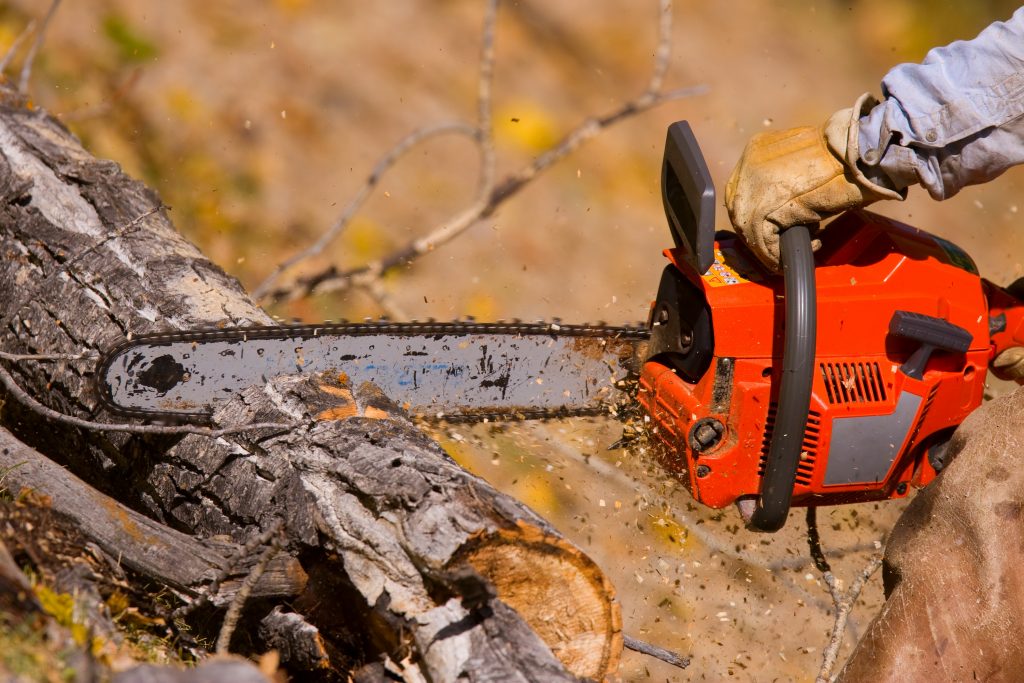Best Practices for Working with or near Chainsaws

Chainsaw Safety: Best Practices for Working with or Near Chainsaws in Canada
Chainsaws are powerful tools used in various industries across Canada, including forestry, construction, landscaping, and agriculture. While chainsaws are invaluable for cutting trees, trimming branches, and processing wood, they also pose significant risks if not used correctly. Accidents involving chainsaws can result in serious injuries or fatalities, making it essential for workers to follow best safety practices when working with or near chainsaws. In this article, we will explore the key safety considerations and best practices for using chainsaws in Canadian workplaces, emphasizing the importance of proper training, equipment maintenance, and hazard awareness.
- Comprehensive Training:
- Proper training is essential for anyone using a chainsaw in the workplace. Employers should ensure that all operators receive comprehensive training on chainsaw safety, operation, and maintenance before using the equipment.
- Training should cover:
- Safe handling and operation of chainsaws, including starting, stopping, and controlling the tool.
- Proper cutting techniques, such as selecting the appropriate cutting positions and angles.
- Hazard awareness, including recognizing potential hazards such as kickback, pinching, and entanglement.
- Maintenance and inspection procedures, including chain tensioning, lubrication, and sharpening.
- Personal Protective Equipment (PPE):
- Proper PPE is essential for protecting chainsaw operators from injuries. Workers should wear the following PPE when operating chainsaws:
- Chainsaw-specific protective clothing, including chainsaw chaps or pants, gloves, and boots with cut-resistant materials.
- Eye protection, such as safety glasses or goggles, to shield the eyes from flying debris.
- Hearing protection, such as earmuffs or earplugs, to reduce noise exposure from the chainsaw engine.
- Head protection, such as a hard hat or helmet with a face shield, to protect against falling objects and debris.
- Proper PPE is essential for protecting chainsaw operators from injuries. Workers should wear the following PPE when operating chainsaws:
- Equipment Inspection and Maintenance:
- Chainsaws should be inspected before each use to ensure they are in safe working condition. Operators should check the following:
- Chain tension: The chain should be properly tensioned to prevent slippage or derailment during operation.
- Chain condition: The chain should be sharp, undamaged, and properly lubricated to ensure smooth cutting.
- Engine and controls: The chainsaw engine should be in good working order, and all controls should function properly.
- Fuel and oil levels: The chainsaw should be fueled and oiled according to manufacturer recommendations to prevent engine damage or malfunction.
- Chainsaws should be inspected before each use to ensure they are in safe working condition. Operators should check the following:
- Safe Operating Practices:
- When operating a chainsaw, workers should follow these safety guidelines:
- Maintain a secure footing and stable stance while cutting, avoiding slippery or uneven terrain.
- Use both hands to grip the chainsaw handles firmly, keeping fingers away from the cutting area.
- Stand to the side of the cutting path, never directly behind the chainsaw to avoid kickback.
- Keep bystanders and coworkers at a safe distance from the cutting area to prevent accidents.
- Never operate a chainsaw above shoulder height or while standing on a ladder or unstable surface.
- Use caution when cutting near power lines, structures, or other obstacles to avoid entanglement or contact.
- When operating a chainsaw, workers should follow these safety guidelines:
- Hazard Awareness and Risk Mitigation:
- Chainsaw operators should be aware of potential hazards and take steps to mitigate risks:
- Identify and avoid hazards such as dead or leaning trees, overhead branches, and hidden obstacles.
- Assess the terrain for potential hazards such as slopes, ditches, and unstable ground conditions.
- Plan the cutting operation carefully, considering factors such as weather conditions, wind direction, and nearby structures or equipment.
- Communicate with coworkers and establish clear work zones to prevent conflicts and ensure everyone’s safety.
- Chainsaw operators should be aware of potential hazards and take steps to mitigate risks:
- Emergency Preparedness:
- Chainsaw operators should be prepared to respond to emergencies or accidents:
- Carry a first aid kit and know how to administer basic first aid for cuts, lacerations, and other injuries.
- Have a means of communication, such as a cell phone or two-way radio, to call for help in case of an emergency.
- Know the location of emergency exits, evacuation routes, and first aid stations in the work area.
- Chainsaw operators should be prepared to respond to emergencies or accidents:
Working with chainsaws can be hazardous, but by following best safety practices, operators can minimize the risk of accidents and injuries. Comprehensive training, proper PPE, equipment inspection and maintenance, safe operating practices, hazard awareness, and emergency preparedness are essential elements of chainsaw safety in Canadian workplaces. Employers must ensure that workers receive adequate training and support to work safely with chainsaws, and chainsaw operators must remain vigilant and proactive in identifying and mitigating risks. By prioritizing safety and adhering to best practices, chainsaw operators can perform their duties effectively while minimizing the risk of accidents and injuries in Canadian workplaces.
Categories
- Aerial Lift
- ATV Training
- Bear Awareness
- Chainsaw Training
- Confined Space
- Defensive Driving
- Forklift Training
- Lockout Tagout
- Online Safety Training
- Overhead Crane
- Pipeline Construction Safety Training
- Propane Handling
- Safety Training Benefits
- Scissor Lift
- Skid Steer Training
- Space Awareness
- TDG
- Telehandler Forklift
- Traffic Control
- Train the Trainer course
- Training Course
- Uncategorized
- WHMIS
- Workplace Harassment and Violence Preventiont
